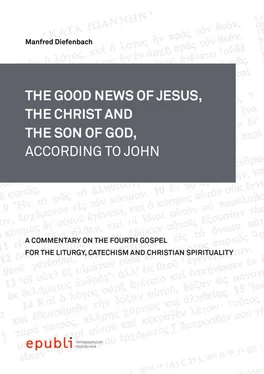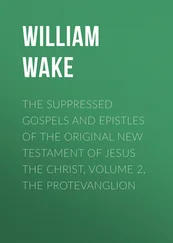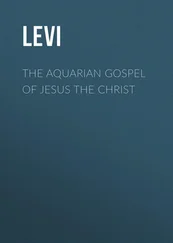v. 22:The Fourth Evangelist relates that “ the crowd ” who “ had eaten the bread ” (v. 23b) “ looked for ” 527(vv. 24e, 26c) “ Jesus ” and “( His ) disciples ( )” “ on the next day ” (in Greek “ t ē epa ú r ɩ on ” in v. 22a and 1:29, 34, 43 and in 12:12). The people “ saw ” (in Greek “ horáo ” in vv. 22a, 24b)/realized that “ His disciples ” (v. 22c) “ had gone away ” by “ boat ” (in Greek “ plo ɩ ár ɩ on ” in vv. 22b, 23a, 24c and “ plo ῖ on ” in vv. 17a, 19c, 21a, b, 22c) and “ Jesus ” and the “ disciples ” were “ not there ” (v. 24b) “ near the place ” (v. 23a 2) of their feeding.
Verse 23sums up the multiplication of 5,000 and their feeding in the words as follows: “ They had eaten the bread ” (vv. 5f, 11c–12a, 13c, 23b) “( ) / after / the Lord ” (cf. 20:2, 13, 18, 20, 28[; 21:7, 12]) “( had given thanks )” (vv. 11b, 23c and Luke 22:19; 1 Corinthians 11:23 528).
v. 24:In this way, the people crossed from the east “ seaside ” (in Greek “ péran ” in vv. 1a, 17b, 22a, 25a) to the west side by “ boats ” (vv. 23a; 24c) and they also came to “ Capernaum ” (in Greek “ Kapharnaoúm ” in vv. 17b, 24d, 59 and in John 2:12; 4:46) and
v. 25a:“ found ” – note the pair of the verbs “ seek / look for ” in verses 24e, 26c and “ find ” in verse 25a or, for example, John 7:34–36 529; Matthew 7:7–8; Luke 11:9–10; 15:8 – Jesus (cf. Mark 1:37) there – not by boat.
- Part I: The Crowd and Jesus (vv. 25b–40 530 )
The first part of the discourse is a discussion in the form of questions by the Jewish people (cf. vv. 25c, 28b–c, 30b–31c, 34b) and the answers of Jesus (cf. vv. 26b–27d, 29b–d, 32b–33b, 35b–40d).
+ First Dialogue between the Crowd and Jesus (vv. 25b–27)
v. 25b–c:The CROWD from the east side of the sea and some from Tiberias asked Him: “ Rabbi , when 531( ) / did / You come/get ( here )?” The title “ rabbi ” 532emphasizes the introductory circumstantial question; their questions (cf. vv. 28b–c, 30b–31c) express their expectation (cf. v. 34b) in the dialogue in verses 25–40 about the eating of bread during His feeding of 5,000 (cf. vv. 1–15) as a physical nourishment and His viewpoint of “the Bread of Life” as the spiritual, sacramental nourishment between Jesus and the people who look for Him.
v. 26:Jesus introduces the topic of the multiplication and of the bread and the feeding of the 5,000 a day later with the typical introductory phrase “ amen, amen, I tell you ” (vv. 26b, 32b, 47a, 53b and Numbers 5:22; Nehemiah 8:6) of self-revelation/manifestation. Jesus criticized the people who followed Him only for the physical “ signs ” respectively temporal benefits. He is against performance/show/event catchers (cf. vv. 2b, 14a–b, 30b–c and John 2:18; 3:2; 7:31; 11:47; 12:18, 37). The Fourth Evangelist informed about seven “ signs ” in the so-called “Book of signs” 533(cf. 1:19–12:50). The two keywords “ to eat ” 534and “ bread ” 535are the terms of Chapter 6.
v. 27:JESUS introduces an alternative in the form of a correction 536(“ not … but ” in v. 27a, b 1): Perishable, spoilt food in a literal sense (cf., for example, Deuteronomy 8:3; Matthew 6:25–26; Luke 12:22–24) versus 537enduring, lasting and His real “ food ” (in Greek “ br õ s ɩ s ” in vv. 27a, 55a and in John 4:32) which gives “ eternal life ” (in Greek “ zoè a ɩ ón ɩ os ” 538in vv. 40c, 47b, 54b, 68c and in 4:14) in the metaphorical level 539. The “giver” 540(cf. v. 35b–c) of this food is the “ Son of Man ” 541(cf., for example, vv. 27c, 53c, 62a) through “ God ”.
+ Second Dialogue between the Crowd and Jesus (vv. 28–29)
v. 28:Jesus makes statements which are misunderstood by the (Jewish) people and then further clarified by Him (cf. vv. 28b–c, 30b–d, 41a–d, 52a–b). So, for example, the verb and catchword “ work ” (in Greek “ ergázoma ɩ ” in v. 27a) is the aim of their second question in regard to “ works of God ” (in Greek “ tà érga to ũ theo ũ ” [plural] in v. 28c and 5:36; 9:3 – “ tò érgon to ũ theo ũ ” [singular] in v. 29b) in the sense of the – more qualitative and less quantitative – doing of human beings in God’s mind (cf. 1 John 3:23 542).
v. 29:The Fourth Gospel is a book for our faith in Jesus Christ (cf. John 20:30–31) “ whom (God) has sent ” (cf. vv. 29d, 57a and John 3:34; 5:36, 38; 7:29; 8:42; 10:36; 11:42; 17:3, 8, 18, 21, 23, 25; 20:21; 1 John 4:9–10, 14). Therefore everyone has to decide for or against saying YES (cf. vv. 35d, 47b, 68–69) or NO to Him (cf. v. 36c). This decision is especially described in the Fourth Gospel in a positive way 543or in a negative way 544. “ Faith ” (in Greek “ p ɩ steúo ” [= to believe] in vv. 29c, 30c, 35d, 36c, 40b, 47b, 64b, d, 69a) is basically believing in the person of Jesus as the Christ and as the Saviour/Redeemer (cf. John 3:17; 4:42; 1 John 4:14).
+ Third Dialogue between the Crowd and Jesus (vv. 30–33)
vv. 30–31:The CROWD focuses the discussion about the “ seeing ” (in Greek “ horáo ”) of His “ doing ” of a “ sign ” (vv. 2b, 14a–b, 30b and John 2:18; 7:31; 11:47; Matthew 12:38; Luke 23:8) in the end on the example of the shower of “ manna ” (in Greek “ mánna ” in vv. 31a, 49, 58c and Hebrews 9:4; Revelation 2:17) “ in the desert 545” according to Exodus 16,4, 15; Nehemiah 9:15; Psalms 78:24; 105:40: God gave the (Chosen) People “ bread ( which came down) from Heaven ” – note in combination with the verbs “ dídomɩ ” (= to give) in verses 31c, 32c, d and “ kata-baíno ” 546(= to come down) in verses 33a, 41c 2–d, 50a 2–b, 51a 2–b, 58a 2–b) to “ eat ”.
v. 32:A second time Jesus corrects 547(“ not … but ” in v. 32c, d – cf. v. 27a, b) them: Not Moses 548had given (Perfect tense in Greek “ dédoken ” in v. 32c) the “ bread from Heaven ” but God, His heavenly Father, is (Present tense in Greek “ dídos ɩ n ” [= gives] in v. 32d) the source of it,
v. 33:of – eternal in verses 40c, 47b, 54b, 68c – “ life ”. It “comes down” 549(vv. 33a, 38a, 41d, 42e, 50b, 51b, 58b) like God’s gift/giving from Heaven on earth/world (in Greek “ k ó smos ”). The receivers of this message are “all” of the “ world ” (vv. 33, 51g) in a universal 550sense.
+ Fourth Dialogue between the Crowd and Jesus (vv. 34–40)
Читать дальше












